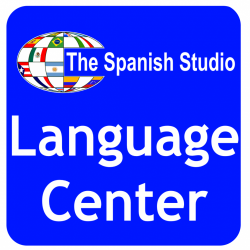Beginning 1 Is designed to give a basic foundation for oral communication. Simple verb tenses, sentence order and practical vocabulary that you can use immediately are taught. We start with greetings, identifying, obtaining and giving personal information. Expressing how you are and how you feel. Using numbers to give phone numbers, addresses, prices, etc. general rules of pronunciation, gender of Spanish nouns. Describing people and places, family, descriptive adjectives and possessive pronouns. Telling time and talking schedule. Comparative and Superlative forms of adjectives. Present tense conjugation of regular Spanish verbs who, what, where, when and how question forms..All this is covered in "Beginning 1 Spanish".
Beginning 2 Builds on what is learned in "Beginning 1" classes. Discussion of the different uses of the verbs SER and ESTAR. Talking about our lives using present tense conjugation of regular verbs. Introduction of Radical and Irregular verbs. Talking about the things we are doing currently in our lives using the "Present Progressive" construction. Soft commands using verbs + Infinitives to give instructions and directions. Introduction of Direct and Indirect Object Pronouns and commonly used verbs to express likes and dislikes (me gusta..., me molesta..., etc.) Talking about everyday activities using the reflexive construction.
Intermediate 1 Builds on what is learned in Beginning 2 class. Vocabulary is expanded. Past and future tenses are introduced to talk about your life in the past and your plans for the future. Discussion of the use of prepositions, and verbs that contain and adopt prepositions (buscar, apagar, etc) Use of the conditional tense to talk about possibilities and create speculations (Trabajaria si..) Different uses of Spanish past participles and perfect tenses (he comido, habia comido, habre' comido, etc)
Intermediate 2 Starts where Intermediate I leaves off. By now you should be able to use past tense of irregular verbs and have sufficient vocabulary to ask for and understand information, use adjectives in descriptions and express opinions in simple forms. New learning includes imperfect, present perfect and past perfect tenses for use in conversation. Increasingly complex sentence structures are taught.
Intermediate 3 Emphasizes the use of the "conditional" and "subjunctive" for use in conversation as well as other complex structures. New learning includes: Different uses of the "Conditional Tense", use of the pronoun "se", Direct and Indirect commands, Present Subjunctive, Imperfect Subjunctive, Pluperfect Subjunctive and Conditional Sentences.
Advanced Conversation Is for the student who needs to brush up on verb tenses, who wants to practice discussing newspaper articles or opinions. Students choose topics of interest.




